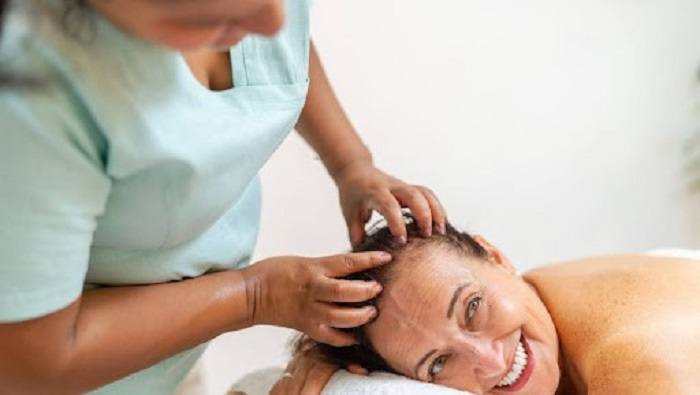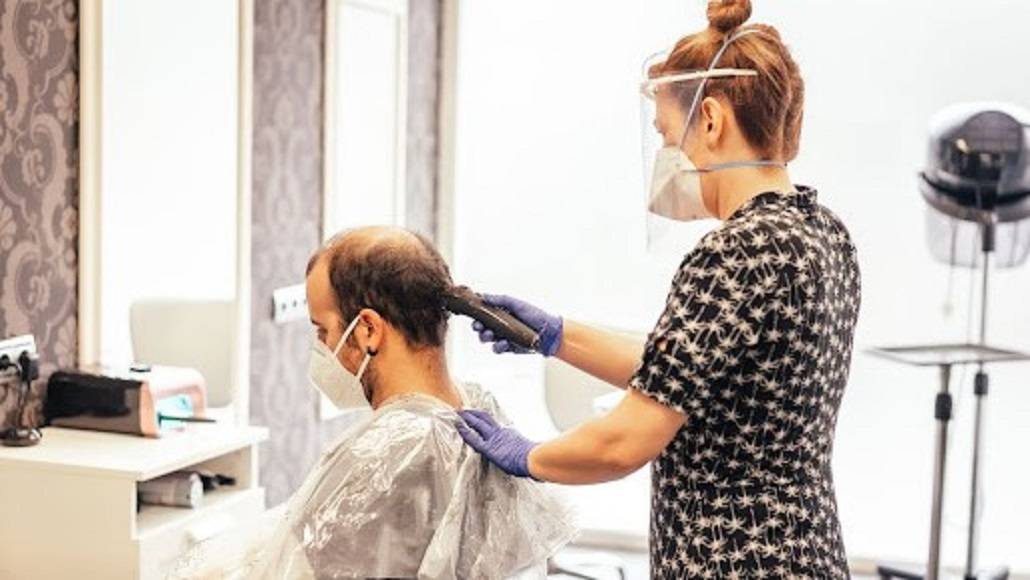Are you balding or thinning out on top? It can be an embarrassing situation if you’ve previously had a full head of lustrous hair. While some men embrace the pate and shave their head if they begin to go bald, others prefer to attempt to regrow their hair, using some treatments. This article will share the future of balding treatments and what is new this year. We’ll cover existing treatments while also looking towards the future.
Common Causes of Balding and Hair Loss
People, on average, lose around 50 to 100 hairs a day, as someone with a dnp degree online would know. This usually isn’t that noticeable because new hair is growing in at the same time. Hair loss occurs when new hair doesn’t grow to replace the hair that has fallen out.
Hair loss is usually related to one or more of the following factors:
Family history (genetics). The most common cause of hair loss is a hereditary, or genetic condition that happens as you age. This condition is called androgenic alopecia, male-pattern baldness, and female-pattern baldness. It usually occurs gradually and in predictable patterns, and manifests as a receding hairline and bald spots on the top of the head in men and thinning hair along the crown of the scalp in women.
Hormonal changes and medical conditions. A variety of medical conditions can cause permanent or temporary hair loss in men and women, including hormonal changes due to pregnancy, childbirth, menopause, and thyroid problems. Medical conditions include alopecia areata, which is immune system-related and causes patchy hair loss, scalp infections such as ringworm, and a hair-pulling disorder called trichotillomania.
Medications and supplements. Hair loss can be a side effect of certain drugs, such as those used for cancer, arthritis, to treat depression, medications for heart problems, gout, and high blood pressure.
Stress. Stress, such as that caused by overworking or other stressors, can result in hair loss.
Lifestyle factors. These can cause hair loss, such as poor nutrition (especially diets high in processed foods, low in essential nutrients, and excessive alcohol consumption), smoking, and certain hair care practices like tight hairstyles, perms, and harsh products can all contribute to it.
Current Treatments Available

There is a range of current treatments available on the market for hair loss.
Medications are available to treat pattern (hereditary) baldness. The most common options include:
Minoxidil (Rogaine). This over-the-counter (nonprescription) medicine comes in liquid, foam, and shampoo forms. For women, you apply the product to your scalp skin once daily, and twice daily for men. Many people prefer to apply the foam when their hair is wet.
Products with minoxidil help many people regrow their hair or can slow the rate of hair loss or both. It’ll take at least six months of continuous treatment to prevent further hair loss and to start hair regrowth. It may take a few more months to determine whether the treatment is working for you or not. If it is helping, you’ll typically need to continue using the medicine on an ongoing basis to retain the benefits.
Possible side effects of minoxidil include scalp irritation and unwanted hair growth on the adjacent skin of the face and hands.
Finasteride (Propecia). This is a prescription drug designed for male hair loss. You take it once a day as a pill. Many men taking finasteride daily experience a slowing of hair loss, and some may even show new hair growth. It may take a few months to tell whether it’s working for you or not. You’ll need to keep taking it to retain any benefits. Finasteride may not work as well for men over the age of 60.
Some rare side effects of finasteride include a diminished sex drive and sexual function, and an increased risk of prostate cancer. That’s why it is important to take this under the direction of a primary care physician.
Other medications. Some other oral options include spironolactone (Carospir, Aldactone) and oral dutasteride (Avodart).
Hair Transplant
In the most common type of permanent hair loss, only the top of the head is affected. Hair transplants, or restoration surgery, can make the most of the hair you have left.
When undergoing a hair transplant procedure, a dermatologist or cosmetic surgeon will remove hair from a part of the head that still has hair and transplant it to a bald spot. Each patch of hair has one to several hairs (called micrografts and minigrafts). Sometimes, a larger strip of skin containing multiple hair groupings is taken from another part of the head. This procedure doesn’t require hospitalisation, but it is quite painful, so you’ll be given sedative medication to ease any discomfort. Possible risks of this surgery include bruising, bleeding, infection, and swelling on and around the head. You may need more than one surgery to get the desired effect. It is worth noting that hereditary hair loss will eventually progress despite surgery.
Surgical procedures to treat baldness are not usually covered by health insurance.
Laser Therapy
The Food and Drug Administration in the U.S.A. has approved a low-level laser device as a possible treatment for hereditary hair loss in men and women. A few small studies have demonstrated that it improves hair density. However, more studies are needed to show the long-term effects of this treatment.
Platelet-rich plasma therapy
Platelet-rich plasma (or PRP) therapy is a non-surgical hair loss treatment that uses a patient’s own blood to stimulate hair follicles and promote regrowth. A blood sample from the subject is processed in a lab to concentrate the platelets, which are then injected into the scalp to deliver growth factors that can rejuvenate dormant follicles, increase hair thickness, and reduce hair loss and fall. The procedure typically involves multiple sessions over several weeks apart, followed by periodic maintenance treatments to sustain hair growth and loss prevention results.
New Breakthroughs and Future Directions for Hair Loss in 2025
Some exciting new developments and future directions for hair loss therapy are emerging in 2025, such as stem cell therapy, AI-assisted treatment personalization, new regenerative medicines, and new clinical trials.
A Hair Loss Summary
This helpful article has covered the future of balding and hair loss treatments. We’ve covered what hair loss is, why it occurs, current treatments, and some exciting new possibilities in this field for 2025.




















